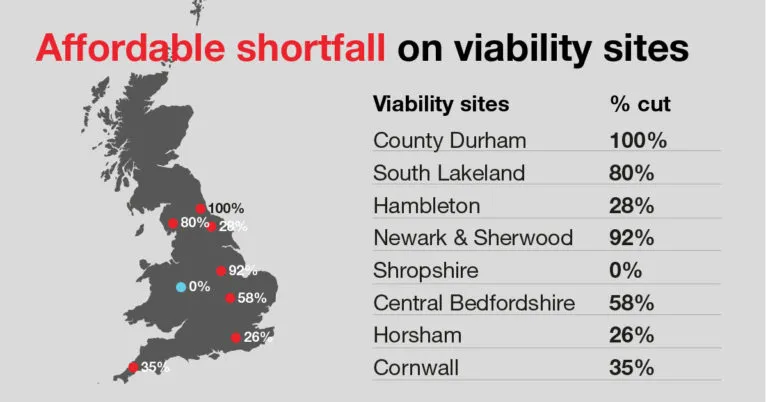Villages are unviable without affordable homes
Published: by Rose Grayston

The Campaign to Protect Rural England (CPRE) is known for sticking up for the countryside and rural communities, while Shelter is known for campaigning to end bad housing and homelessness. These are not two charities you might automatically pair together. However, both organisations have a long history of campaigning to ensure that the needs of communities are met, first and foremost, when housing developments are planned and delivered – countrywide, in Shelter’s case, and in rural areas, in CPRE’s. And when it comes to tackling the housing crisis, we are united in our goal: for people to have decent homes they can afford, whether they live in cities, towns or villages.
That’s why Shelter and CPRE have launched new joint research, ‘Viable Villages’, to shine a light on one way for rural communities to get more of the affordable homes they need to thrive. With reforms to the National Planning Policy Framework (NPPF) expected any day, our research has focused on the use of ‘viability assessments’ to undercut affordable housing requirements in rural areas. This is a problem that some simple changes to the NPPF could fix with the stroke of a pen.
How it works
Viability tests are essentially a legal loophole within planning policy that means developers can reduce their affordable housing commitments if their profits slip below ‘competitive’ levels – which the major housebuilders define as around 20%. That means developers can overpay for land to guarantee they win sites, safe in the knowledge they will be able to recoup the costs later by squeezing out affordable housing. A developer committed to delivering affordable housing could be out-bid for land by a developer which uses this viability loophole, locking housebuilders in a race to the bottom. Because of this system, councils cannot force developers to deliver their fair share of affordable housing – leaving ordinary people, unable to afford market prices for housing, to lose out.
New evidence on rural viability
Our new study follows Shelter’s report, ‘Slipping through the loophole’, which examined how the use and abuse of viability assessments led to the loss of affordable homes in nine of the biggest cities across England. In this new research, we investigated the use of viability assessments in eight rural councils from 2015-16, and found that when they were used, the amount of affordable housing delivered was cut by almost half (48%). Councils’ affordable housing policies required, on average, 34% of new housing to be affordable – but just 18% was achieved when developers used viability assessments. And almost a quarter of developments we investigated saw viability tests being used. Using this legal loophole has become the norm for some developers, and rural communities are repeatedly losing the affordable homes they need.

Time for action
But why have we come together to fight this problem – and why now?
The crisis of affordable housing supply in rural settings is poorly understood, and is not discussed with anything like the urgency it deserves. Homes are, on average, more expensive in rural areas while wages are, on average, lower. As a result, many young people and families are badly and expensively housed. Others are priced out of rural communities entirely – forced to move away from friends, families and jobs. This situation is hollowing out rural communities: villages are losing vital services and amenities such as schools, post offices and pubs at alarming rates, because the individuals and families that would use and work in them can no longer afford to live in the area. This is a far cry from the thriving rural communities, full of life, opportunity and diversity, that we wish to see.
But we have a chance to change this. Some simple changes to viability policy wording in the government’s upcoming NPPF re-write could make the world of difference to communities in need of affordable housing, in both urban and rural areas. We have combined our voices to make sure this opportunity is not missed. We are calling on the government to amend national planning policy to close the loophole once and for all.
Viability assessments must become:
- fair – completed according to new standards, with developers entitled to ‘a return’(not an assumed 20% ‘competitive’ return)
- limited – used only in exceptional circumstances
- transparent – published and open to public scrutiny
Of course, viability is not the only issue affecting the delivery of affordable housing in rural areas. Cuts to capital grant, financial restrictions on councils, and the way Right to Buy operates all act as barriers to driving up access to affordable homes. We will continue to campaign on these and other issues. But the viability loophole can be closed now, with relative ease and no additional public spending, through revisions to the NPPF. It is a chance for the government to prove if it will live up to its rhetoric on putting communities first when tackling the housing crisis. We will be watching, and ready to hold it to its word.
Read our full report for more details on our proposals.